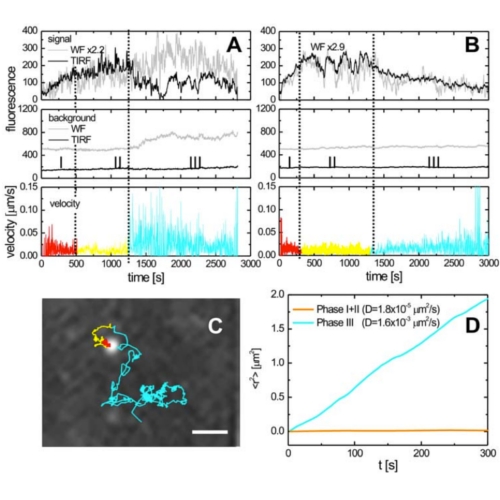Dynamics of HIV-1 Assembly and Release
06-Nov-2009
PLoS Pathog., 2009, 5(11), e1000652, doi:10.1371/journal.ppat.1000652 published on 06.11.2009
PLOS Pathog., online article
PLOS Pathog., online article
Assembly and release of human immunodeficiency virus (HIV) occur at the plasma membrane of infected cells and are driven by the Gag polyprotein. Previous studies analyzed viral morphogenesis using biochemical methods and static images, while dynamic and kinetic information has been lacking until very recently. Using a combination of wide-field and total internal reflection fluorescence microscopy, we have investigated the assembly and release of fluorescently labeled HIV-1 at the plasma membrane of living cells with high time resolution. Gag assembled into discrete clusters corresponding to single virions. Formation of multiple particles from the same site was rarely observed. Using a photoconvertible fluorescent protein fused to Gag, we determined that assembly was nucleated preferentially by Gag molecules that had recently attached to the plasma membrane or arrived directly from the cytosol. Both membrane-bound and cytosol derived Gag polyproteins contributed to the growing bud. After their initial appearance, assembly sites accumulated at the plasma membrane of individual cells over 1–2 hours. Assembly kinetics were rapid: the number of Gag molecules at a budding site increased, following a saturating exponential with a rate constant of ~5x10^-3 per second, corresponding to 8–9 min for 90% completion of assembly for a single virion. Release of extracellular particles was observed at ~1,500 +/- 700 s after the onset of assembly. The ability of the virus to recruit components of the cellular ESCRT machinery or to undergo proteolytic maturation, or the absence of Vpu did not significantly alter the assembly kinetics.











